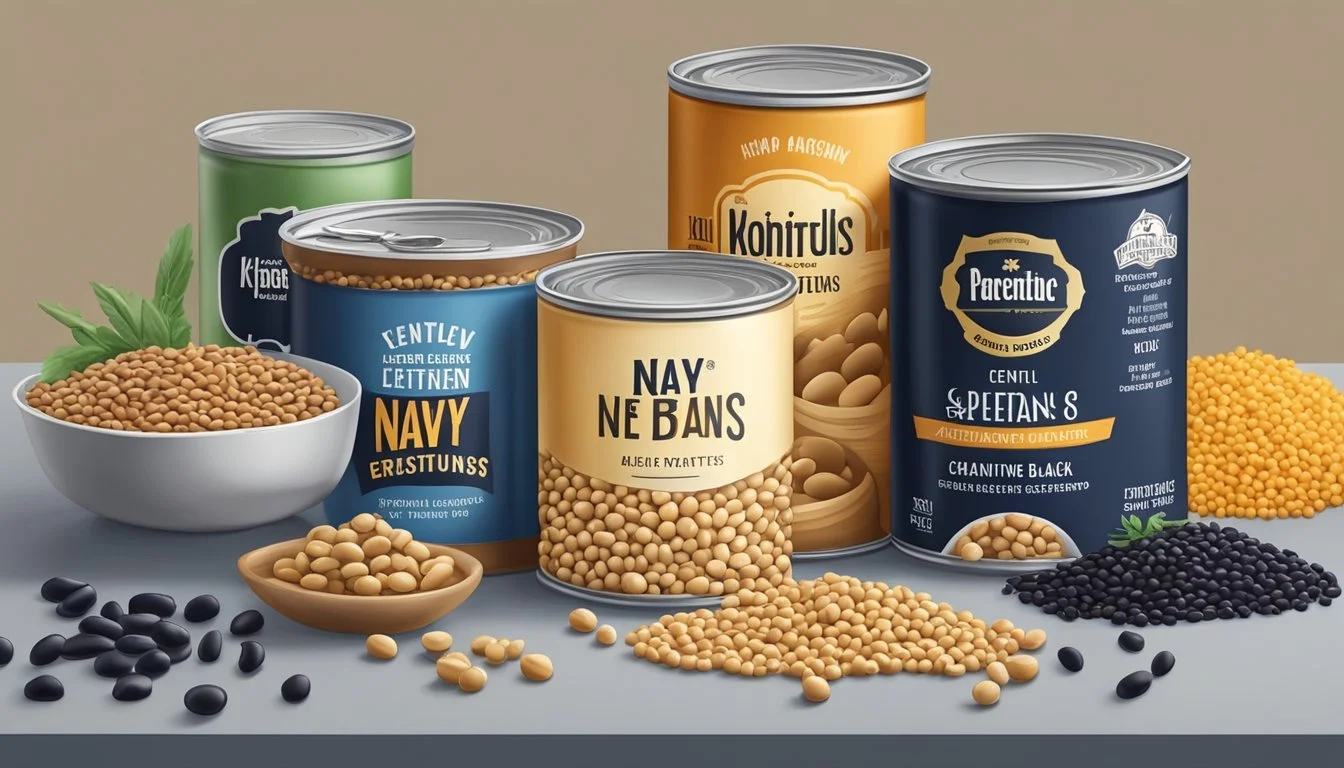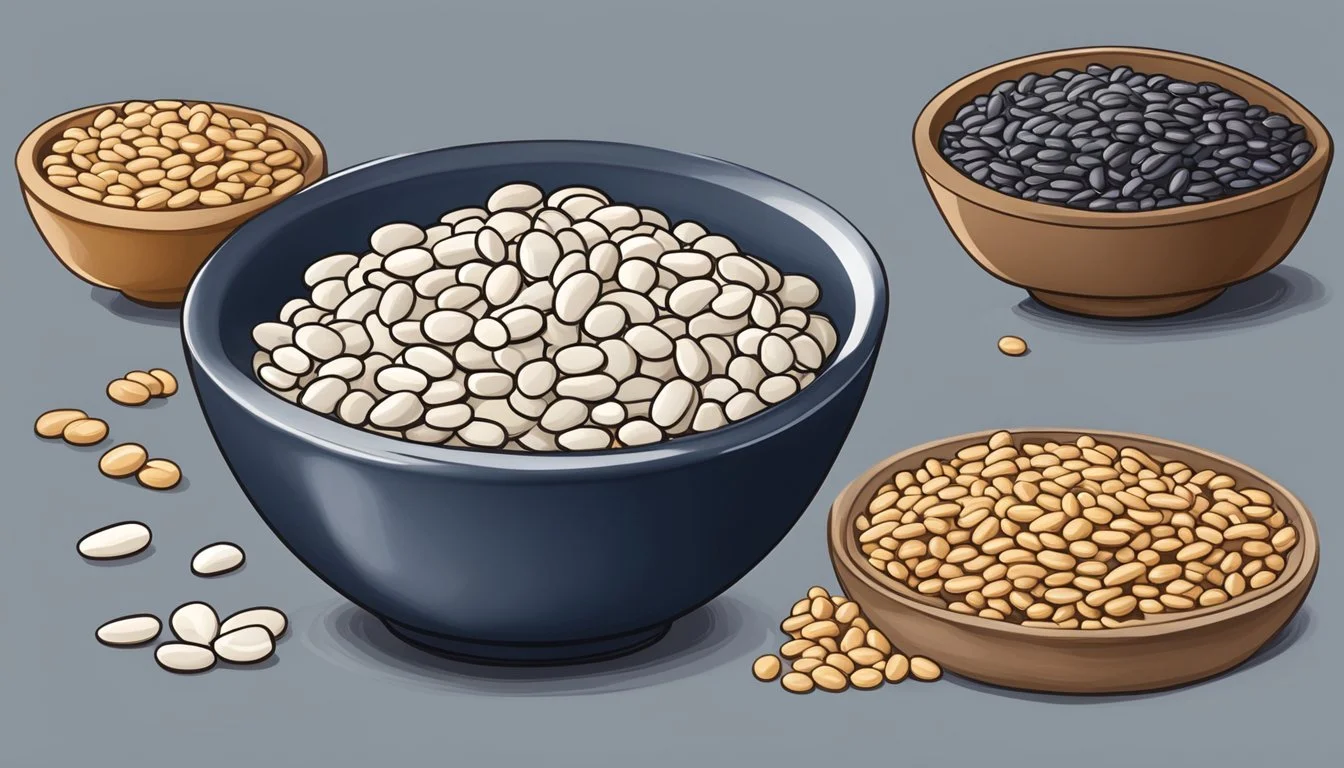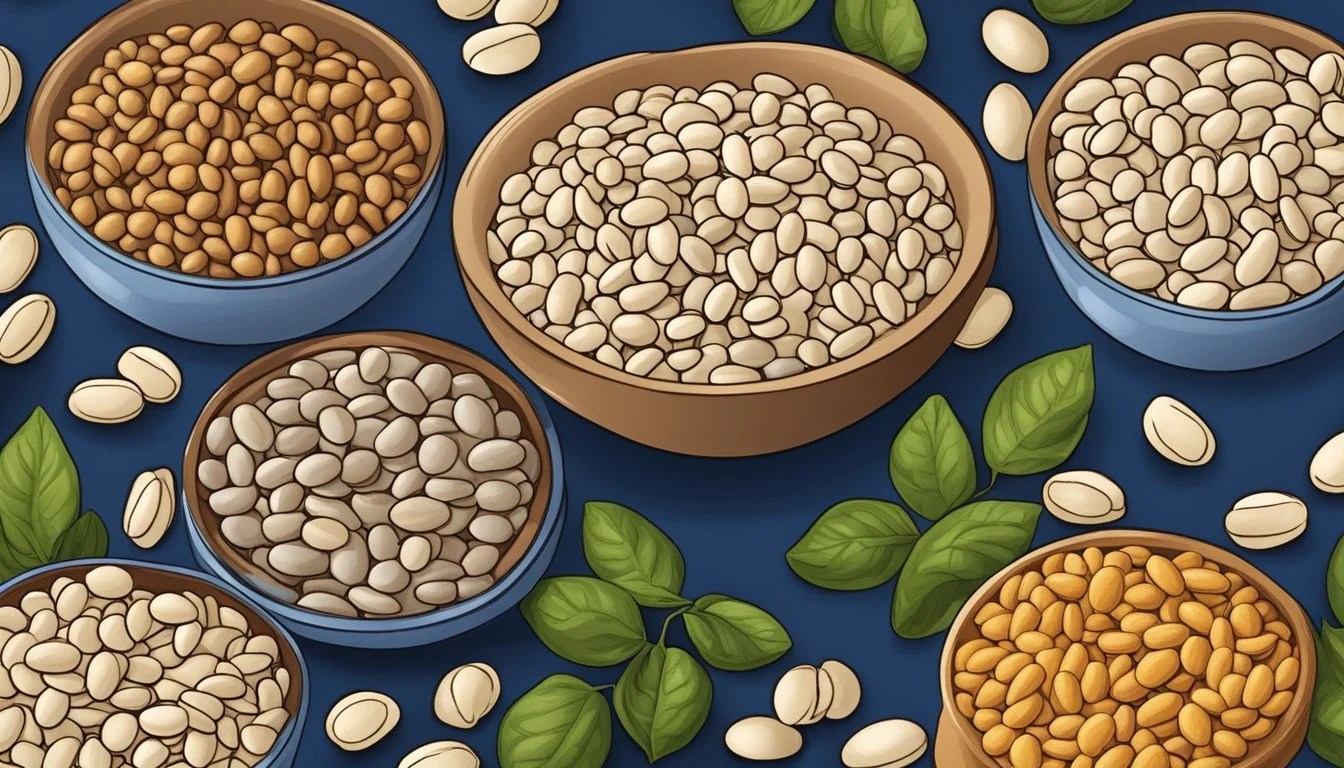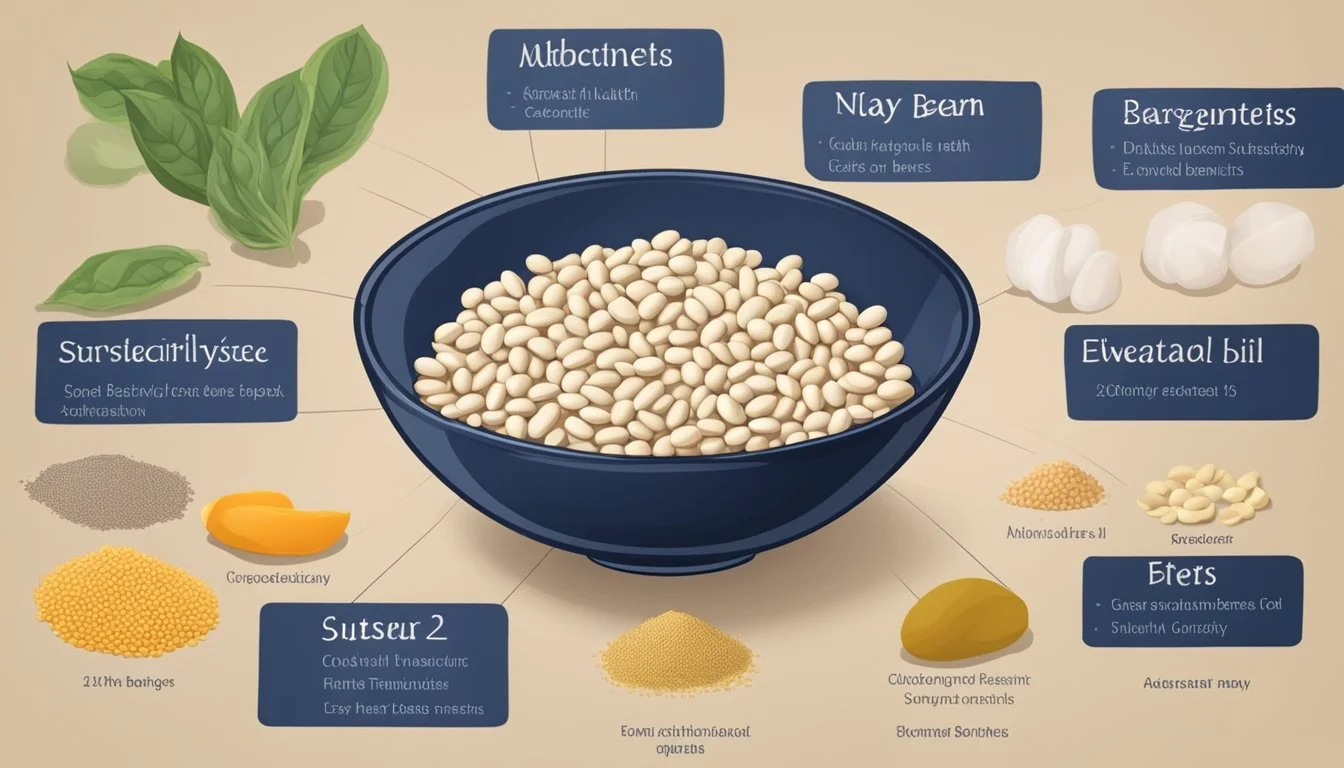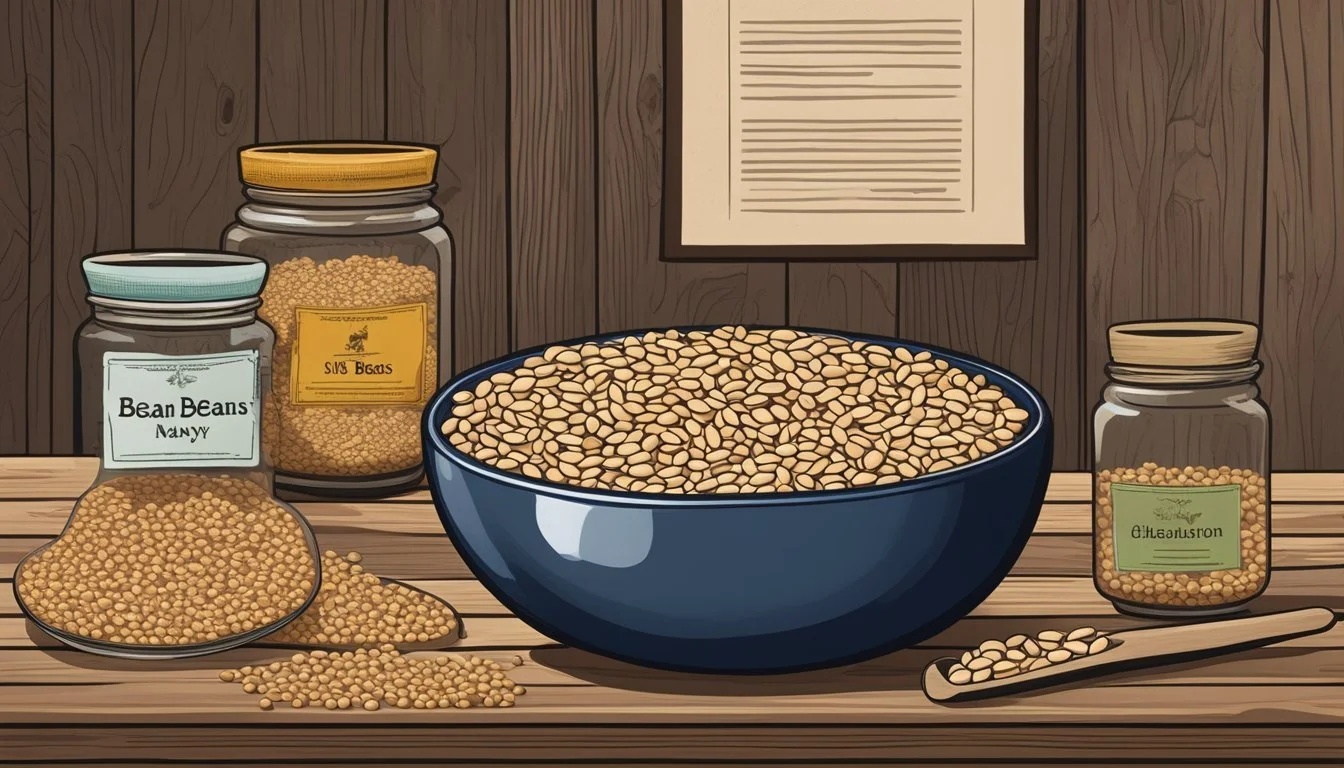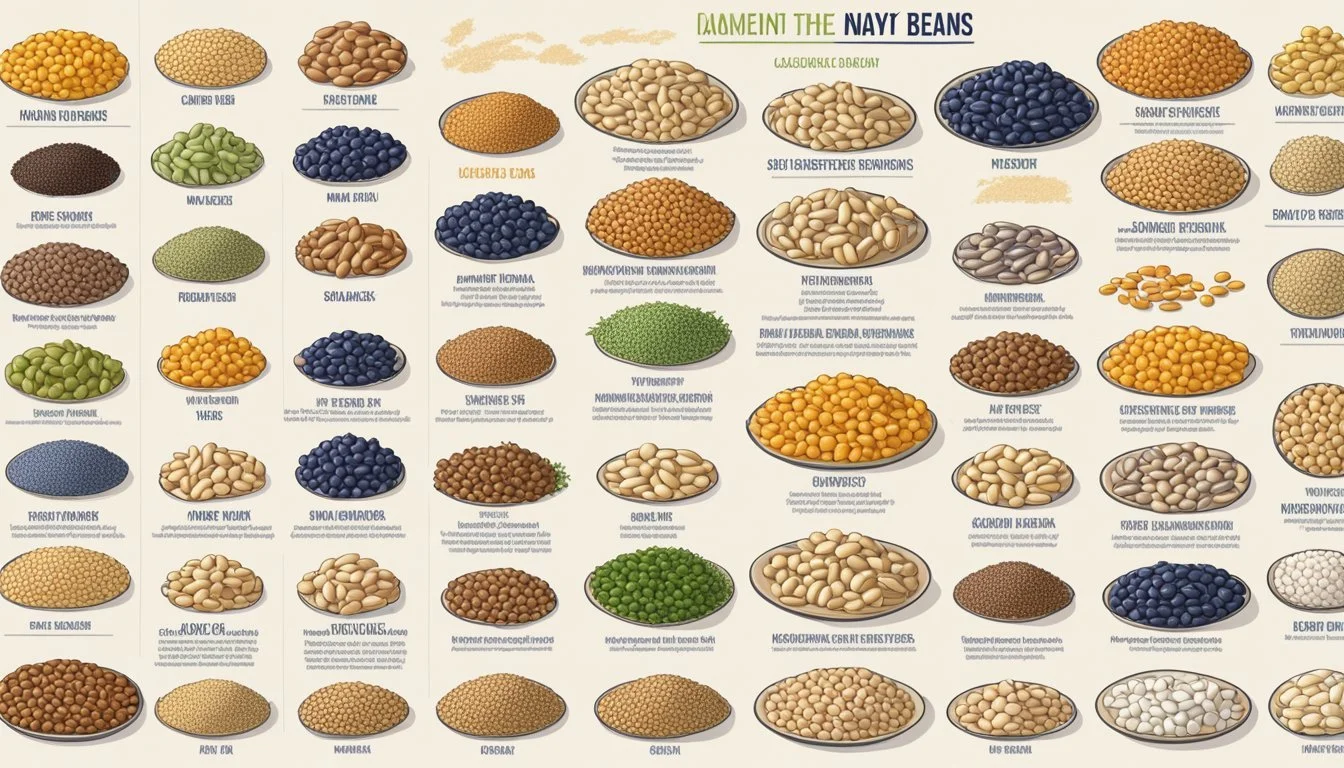Navy Beans Substitutes
Top Alternatives for Cooking
Many cooks enjoy the creamy texture and mild flavor that navy beans bring to dishes, but there are times when a suitable substitute is needed. Whether due to dietary restrictions, availability, or just a desire to experiment with new flavors, finding the right alternative can make all the difference. Great substitutes for navy beans include cannellini beans, chickpeas, and pinto beans, each offering unique textures and tastes.
One of the most versatile alternatives is the cannellini bean, which provides an earthy flavor and creamy texture, fitting seamlessly into soups, salads, and stews. Pinto beans, known for their speckled appearance and rich flavor, are another fantastic option, particularly in dishes inspired by Mexican cuisine. Chickpeas, with their nutty and buttery profile, add both nutritional value and a unique twist to any recipe calling for navy beans.
Characteristics of Navy Beans
Navy beans are small, white, and oval-shaped with a mild, creamy, and nutty flavor. They are highly nutritious and versatile, making them a staple in many applications.
Nutritional Profile
Navy beans are rich in protein, making them an excellent choice for those looking to increase their protein intake. A one-cup serving provides around 15 grams of protein. They are also a significant source of fiber, with about 19 grams per cup, which contributes to better digestion and helps maintain a feeling of fullness.
These beans are low in calories, with a one-cup serving containing approximately 255 calories. They are also low in cholesterol and sodium, making them heart-healthy. Navy beans are packed with essential vitamins and minerals such as iron, magnesium, and B-vitamins, which are crucial for maintaining overall health.
Culinary Uses
Navy beans are incredibly versatile in the kitchen. They are commonly used in soups, such as the classic navy bean soup, due to their creamy texture when cooked. They blend well, making them ideal for dishes where a smooth consistency is required, like refried beans.
These beans are also used in salads, stews, and casseroles. Thanks to their mild flavor, they can easily absorb the flavors of the ingredients they are cooked with. They are often used as a meat substitute in vegetarian and vegan dishes because of their high protein content.
Navy beans can also be mashed or pureed and added to sauces and dips, providing a creamy texture without the need for dairy.
Common Substitutes for Navy Beans
Navy beans, small and creamy in texture, are a versatile component in various recipes. If navy beans are unavailable, several alternatives can effectively replace them, offering similar flavors and uses.
Cannellini Beans
Cannellini beans, also known as white kidney beans, are a top substitute for navy beans. They have a mild, earthy flavor and a creamy texture when cooked.
Cannellini beans are slightly larger and elongated in shape compared to navy beans. They work well in soups, salads, and casseroles, maintaining their form without becoming mushy. Their sturdy texture and subtle taste make them a versatile ingredient in numerous dishes, fitting perfectly wherever navy beans are used.
Great Northern Beans
Great Northern beans are another excellent alternative. These beans are medium-sized and white, offering a smooth, creamy texture akin to navy beans.
Although slightly larger and less dense, Great Northern beans absorb flavors well and have a delicate, nutty taste. They are frequently used in stews, soups, and slow-cooked dishes. Their ability to meld seamlessly into various recipes makes them a suitable replacement for navy beans in numerous types of cuisine.
Kidney Beans
Kidney beans can serve as a substitute in dishes where a heartier bite is acceptable. Available in red and white varieties, they have a denser, meatier texture than navy beans.
White kidney beans, also known as cannellini, share a closer resemblance in flavor to navy beans, while red kidney beans impart a slightly stronger taste. Both types retain their shape well during cooking and are ideal for chili, salads, and mixed bean dishes. Their versatility and robust texture offer an alternative with a bit more bite.
Legume Varieties Similar to Navy Beans
Several legume varieties can be excellent substitutes for navy beans due to their similar texture, flavor, and nutritional profiles. These alternatives include chickpeas, black beans, lima beans, and tepary beans, each offering unique benefits and culinary versatility.
Chickpeas and Black Beans
Chickpeas (also known as garbanzo beans) have a firm texture and nutty flavor that make them a versatile substitute for navy beans. Packed with proteins and dietary fiber, they are ideal for salads, stews, and soups. Chickpeas are also rich in essential vitamins and minerals, making them a nutritious addition to any diet.
Black beans are another excellent option due to their moderate size and tender texture. They absorb flavors well, making them ideal for a variety of dishes including rice bowls, tacos, and chili. High in protein and fiber, black beans support a balanced diet and can seamlessly replace navy beans in many recipes.
Lima and Tepary Beans
Lima beans come in different sizes but are generally larger than navy beans. They have a creamy texture and a slightly buttery flavor, making them a perfect addition to casseroles and soups. Lima beans are rich in fiber and protein, which support digestive health and satiety.
Tepary beans are lesser-known but highly nutritious legumes. These small, dense beans have a slightly sweet and earthy flavor. They hold their shape well during cooking, making them suitable for salads and side dishes. Tepary beans are notable for their high protein and fiber content, promoting overall health while serving as a robust substitute for navy beans.
In summary, whether opting for chickpeas, black beans, lima beans, or tepary beans, these legumes provide a suitable and nutritious alternative to navy beans in a variety of culinary applications.
Selecting Substitutes Based on Cooking Applications
Choosing the appropriate substitute for navy beans depends largely on the type of dish you are preparing. The alternatives should complement the flavors and textures and should align with the cooking requirements.
For Soups and Stews
When making soups and stews, it's crucial to choose beans that can hold their shape and add to the hearty texture of the dish. Great Northern beans are an excellent substitute as they have a similar mild flavor and maintain their form well during long cooking times.
Cannellini beans also work well, providing a slightly creamier texture while blending seamlessly into broth-based dishes. Red kidney beans, with their robust flavor, can enhance more strongly seasoned stews and provide additional color contrast.
For Salads and Dips
For cold applications like salads and dips, substitutes need to offer a pleasing texture and flavor when not heavily cooked. Chickpeas are a versatile choice, offering a nutty taste and solid texture that works well in mixed salads and Mediterranean dips.
White kidney beans are another solid option, with their smooth texture and subtle taste making them ideal for adding bulk without overpowering other ingredients. Lentils can also be used, especially in dips where their smaller size and hearty flavor can shine.
For Baked and Refried Beans
Baking or refrying beans requires substitutes that can withstand intense cooking processes while delivering the desired creamy consistency. Pinto beans are a top replacement here; they have a creamy texture that mimics navy beans well and are commonly used in refried bean recipes.
Black beans are another good option for baked dishes, providing a rich and slightly sweet flavor. Tepary beans, with their robust and earthy profile, can offer a unique twist to traditional baked bean recipes, ensuring the dish remains flavorful and satisfying.
Pairing Flavors and Textures
When selecting substitutes for navy beans, it's crucial to consider how various beans' flavors and textures interact with seasonings and balance the overall taste of a dish. Understanding how to pair these elements can elevate your culinary creations.
Seasonings and Aromatics
Pairing beans with the right seasonings can enhance their natural flavors. Navy bean substitutes like Great Northern beans or cannellini beans have a mild, slightly nutty flavor that pairs well with garlic and rosemary. These aromatics accentuate the natural sweetness and earthy undertones of the beans.
Butter beans, with their rich, buttery flavor, can be paired with sage and thyme to add depth to soups and stews. Black beans offer robust, earthy flavors, which are complemented by cumin, coriander, and smoked paprika. Using these seasonings can bring out the full potential of the beans' taste.
Balancing Flavors
When integrating navy bean substitutes into dishes, balancing flavors is key. Pinto beans have a mild sweetness and creamy texture that balance well with spicy chili peppers or smoked meats. This combination creates a harmonious blend of sweetness and spice.
Chickpeas offer a meatier texture and nutty flavor, making them ideal for dishes that require a robust component. Pairing chickpeas with lemon juice and tahini can balance their earthiness, adding a bright and tangy flavor to the dish. This harmony ensures that each component complements the other without overshadowing.
Lentils, with their delicate earthy flavor, pair well with carrots, celery, and onions, creating a balanced and hearty base for soups and stews. Adding herbs like cilantro or parsley can also provide a fresh counterpoint to their earthiness, ensuring a well-rounded dish.
Dietary Considerations and Health Benefits
Navy bean substitutes can offer various health benefits while fitting into specific dietary needs. Many alternatives provide essential nutrients like protein and fiber, along with low sodium and cholesterol content.
Low Sodium and Cholesterol Options
Those looking to reduce sodium and cholesterol intake can opt for certain navy bean substitutes. Great Northern Beans are an excellent choice as they are naturally low in sodium and cholesterol. Lentils also shine in this category; they are low in both sodium and cholesterol while being rich in essential nutrients.
Flageolet Beans offer a similar profile, contributing to heart health through their low sodium and cholesterol content. Incorporating these beans into your diet can be beneficial in maintaining cardiovascular health and reducing the risk of hypertension.
High Protein and Fiber Alternatives
For those seeking high protein and fiber alternatives, Cannellini Beans are a standout substitute. They provide a substantial amount of protein and fiber, along with essential vitamins and minerals. Chickpeas also offer impressive nutritional value, being rich in both protein and dietary fiber.
Red Kidney Beans are another viable option, boosting protein intake and supporting digestive health through their high fiber content. These beans not only support muscle growth and repair but also contribute to overall digestive wellness and satiety. By choosing these high-protein and high-fiber alternatives, individuals can ensure they receive essential nutrients while supporting their health goals.
Historical and Regional Perspectives
Navy beans, also known as haricot beans, have played a significant role in various cuisines globally, influenced by their rich historical and cultural backgrounds. They reflect the diverse culinary practices of different regions and their historical journey.
Origins and Migration of Common Beans
Navy beans originate from South America, where they were cultivated thousands of years ago. Indigenous people in regions like Peru and Mexico domesticated these beans long before European settlers arrived.
In the 16th century, European explorers brought navy beans to North America. These beans quickly adapted to the eastern United States, becoming a staple in American diets. Particularly in Boston, they are famously used in baked bean dishes, which became popular in the 19th century.
Cultural Significance
The cultural significance of navy beans extends beyond mere sustenance; they symbolize heritage and unity. In New England, dishes like Boston baked beans hold a historical connection to early American settlers.
In France, navy beans are prominent in traditional dishes like cassoulet, highlighting their integration into varied culinary traditions. Navy beans are also a central ingredient in the traditional bean soup served in many regions.
Throughout history, navy beans have represented themes of abundance and hospitality, deeply rooted in cultural rituals and culinary exchanges among different societies. Their journey from South America to becoming a fundamental part of various cuisines underscores their importance in global food culture.
Recommended Beans for Specific Diets and Preferences
Different beans suit various dietary needs and preferences. These recommendations cater to both vegetarian/vegan diets and low-carb or keto options, ensuring everyone can enjoy versatile and nutritious legume options.
Vegetarian and Vegan Choices
For those following vegetarian and vegan diets, cannellini beans and butter beans are excellent choices. Both of these white beans offer a rich, creamy texture that enhances soups, stews, and casseroles.
Cannellini beans are particularly versatile and can be used in a variety of dishes, including salads and pasta. Their high protein content makes them a valuable ingredient in plant-based diets.
Butter beans, also known as lima beans, provide a slightly buttery flavor, adding depth to vegan-friendly chowders and purees. They are rich in iron and fiber, promoting a balanced diet.
Other suitable options include chickpeas and pinto beans, known for their distinct flavors and adaptability in numerous recipes, from hummus to chili.
Low-Carb and Keto Options
For low-carb or keto dieters, black soybeans and green beans make ideal substitutes for navy beans without compromising dietary goals. Black soybeans are an excellent option due to their very low carbohydrate content and high protein value.
Green beans, although more of a vegetable than a legume, are another fantastic choice. They are low in carbs and can be conveniently added to stir-fries, salads, or as a side dish.
For those looking for beans that fit a low-carb profile, keto-friendly options include adzuki beans, which are slightly sweeter but still suitable for savory dishes, and mung beans that can be used in various culinary applications, from soups to salads.
Culinary Insights
For those looking to replace navy beans, understanding the nuances of different substitutes and their culinary applications is crucial. Professionals offer valuable insights into selecting and using the right alternatives for your dishes.
Cooking Tips from Professionals
Personal chefs and culinary experts recommend several substitutes for navy beans, such as Great Northern Beans, Butter Beans, Chickpeas, Cannellini Beans, and Pinto Beans. Each offers unique textures and flavors that can enhance various recipes.
Great Northern Beans can seamlessly fit into most recipes calling for navy beans due to their similar size and mild flavor. Butter Beans offer a creamier texture and richer flavor, suitable for hearty stews and creamy soups.
Chickpeas not only provide a nutty flavor but also add a nutritional boost with high protein and fiber content. They work well in salads and dips. Cannellini Beans, often used in Italian cuisine, offer an earthy flavor and creamy texture, making them ideal for soups and casseroles.
Recipe Development and Modification
When adapting recipes, it's important to consider the cooking time and texture of the substitutes. Great Northern Beans and Cannellini Beans generally have similar cooking times to navy beans, requiring minimal adjustments to the recipe.
For a buttery and rich taste, Butter Beans can be used, but one might need to slightly adjust the seasoning to prevent overpowering other flavors. Chickpeas may require a bit longer to cook if used in their dried form, and their firmer texture might alter the consistency of the dish.
Pinto Beans provide a creamy yet distinct flavor, particularly suited for Mexican dishes and southwestern soups. When using Pinto Beans, it's possible to maintain a 1:1 substitution ratio without significant changes to the recipe's balance.
Each substitute can be tailored based on the dish, whether it's a soup, stew, salad, or dip, allowing for creativity and flexibility in recipe creation.
Navigating the Market
When seeking substitutes for navy beans, it's essential to choose high-quality legumes and ensure proper storage to maintain their nutritional value and flavor.
Selecting Quality Legumes
Consumers should examine legumes closely before purchase to ensure they are fresh and of high quality. Look for beans that are uniform in size and shape, without any cracks or discoloration.
Check the packaging date and avoid bags with excessive dust or debris, indicating older stock. Packaging should be intact to prevent exposure to moisture or pests, which can degrade the quality. Shopping at reputable stores is more likely to provide fresher products.
Consider these top substitutes:
Cannellini Beans
Butter Beans
These legumes offer similar flavors and textures to navy beans, making them suitable for various recipes.
Storage and Shelf Life
Proper storage is key to extending the shelf life of beans and other legumes. Store dried beans in an airtight container in a cool, dark place to maintain their quality. Avoid areas with high moisture or heat, such as near the stove or sink.
For optimal freshness:
Use within a year of purchase
Label containers with the purchase date
Cooked beans, when stored in the fridge, should be used within 3-5 days. For longer storage, freeze them in portion-sized containers. This approach ensures that both dried and cooked beans maintain their flavor and nutritional integrity.
Community and Resources
Food enthusiasts can find comprehensive resources to learn about and discuss navy bean substitutes. These resources often share recipes, nutritional information, and user experiences.
Food Enthusiast Forums
Food enthusiast forums are excellent platforms for discovering new and effective navy bean substitutes. Participants share personal experiences, recipes, and tips.
These forums enable users to interact with other food lovers who have used alternative beans such as cannellini beans, butter beans, and great northern beans in various dishes. Participating in these discussions can help individuals learn how substitutes perform in specific recipes and gather new ideas.
Highly recommended forums include websites like Chowhound and Reddit’s r/Cooking, where seasoned cooks and beginners share insights.
Nutrition and Health Blogs
Nutrition and health blogs are another valuable resource. They provide detailed information on the nutritional benefits and potential health impacts of different navy bean substitutes.
Blogs authored by nutritionists and dietitians often explore the protein, fiber, and micronutrient content of beans like chickpeas, lentils, and red kidney beans. Blog posts may also offer meal planning tips to include these substitutes effectively in one’s diet.
Notable blogs include Nutrition Stripped and The Healthy Maven, which frequently cover legume-based protein sources and their role in a balanced diet.

